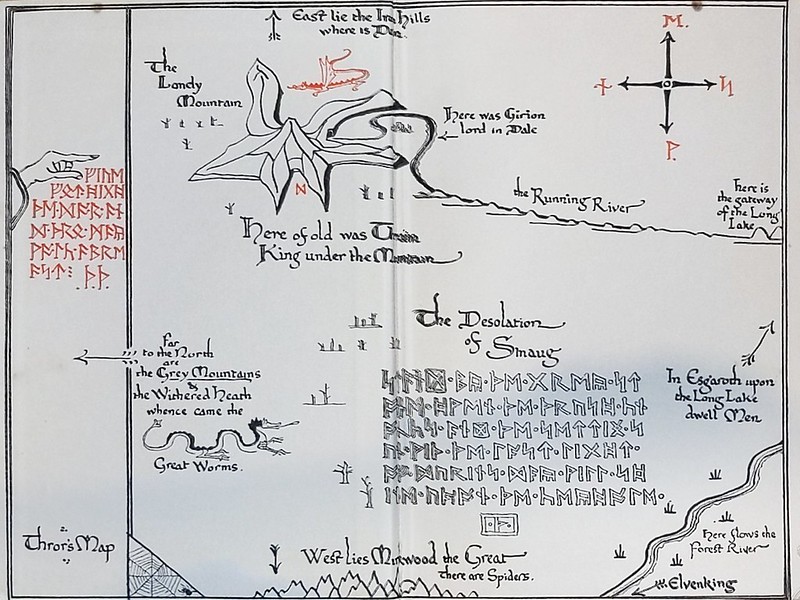 I find it hard to believe that I haven't reviewed this already... I've read it a few times. But perhaps not recently? Except I found we had a hardback copy, in addition to the paperback I've had forever. I think the hardback came from Mfd; anyway, I re-read it. It is still good; far better than almost anything new, naturally.
I find it hard to believe that I haven't reviewed this already... I've read it a few times. But perhaps not recently? Except I found we had a hardback copy, in addition to the paperback I've had forever. I think the hardback came from Mfd; anyway, I re-read it. It is still good; far better than almost anything new, naturally.[Note to self: re-read, New Year 2022/3]

Here are the trolls, in the wood, with their fire. He really is very good at some things, like smoke; not so good at figures. And indeed the "roast mutton" scene, while cute, is not how trolls would behave in LOTR (in TH, trolls are comedy lower-class English workmen). But The Hobbit is a gentler book; it could be considered what would happen if you had to re-work LOTR-like events into a form suitable for children. Perhaps someone should try re-writing it as it would have been told to adults.
* When C.S. Lewis Reviewed His Buddy’s Book… The Hobbit.
But what to actually say about it? When you know that LOTR is coming along as a sequel, you can see that some things don't quite fit, although Tolkein does a remarkably good job of hiding the joins (wiki says that the second edition makes some mods to fit in with LOTR; I think this copy is second edition, fifteenth impression, 1965). I'm thinking of things like the character of Gandalf. Or of the forest elves... is that fair? I'm not sure. There's trivia, like trolls turning to stone in daylight, whereas in LOTR they just don't like light.
Nitpicking: the "secret door", as described, wasn't a very useful door. You could presumably get out of it at any time, but a door that you can only get into once in a Durin's day is rather limited. It is never clear how tech like this was created, either. In most ways the dwarves seem to be on a medieval level, with swords and bows, but with odd bits of magic - invisible doors, swords enchanted to glow - that come from nowhere.
The story is good, and well told. I could relate it, but there's little point. The pictures are lovely. The frontispiece is the map, which is useful.

And the backispiece:


No comments:
Post a Comment